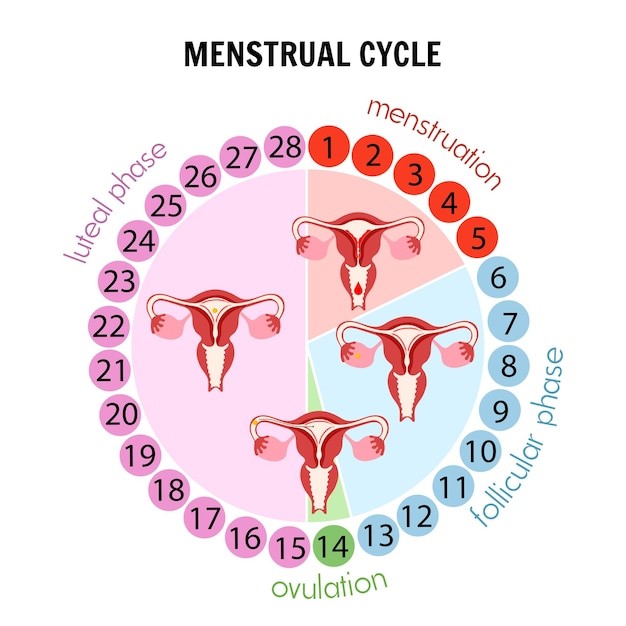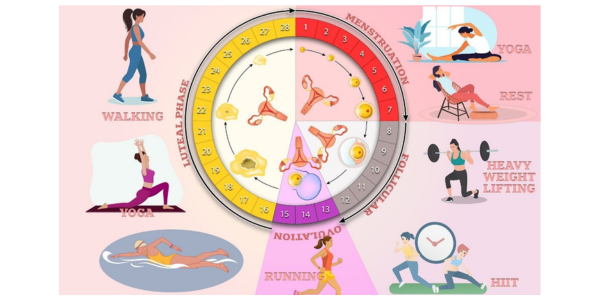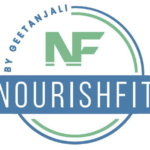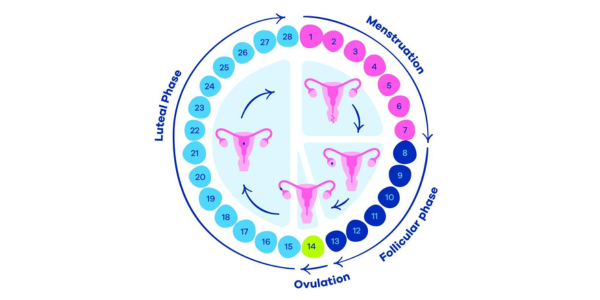Table of Contents
Toggle3 Powerful Tips for a Healthy Menstrual Cycle: Cycle Syncing and Nutrition
Healthy Periods: Cycle Syncing and Nutrition for a Healthy Menstrual Cycle
Our hormones are constantly changing from day to day, but especially from week to week. Imagine how much easier life would be if we understood how our hormones work! Understanding your menstrual cycle can be a game-changer for your overall health and well-being, especially if you have conditions like PCOS (Polycystic Ovary Syndrome) that affect your periods. By tracking your cycle, you can tune into your body’s natural rhythms and optimize your health, fitness, and nutrition.
We’ve all experienced the emotional rollercoaster: that time of the month when we feel moody, irritable, and super sensitive. Hormones are not to be blamed for PMS symptoms as believe me your hormones are beneficial. Estrogen and Progesterone are powerful enhancers of metabolism, mood, healthy hair, and bones.
The First Steps
As a nutritionist, I’ve always been fascinated by the intricate workings of the human body. Like most women, I struggled with the ups and downs of PMS, fluctuating energy levels, headaches, bloating, constipation, acne, and unpredictable moods without really understanding why these changes were happening. Then, I started tracking my menstrual cycle. Within a few months, I noticed distinct patterns. This newfound awareness allowed me to see how different days of the month impacted my health, work, and relationships. This information has been incredibly beneficial. By tracking your cycle, you can tune into your body’s natural rhythms and optimize your health, fitness, and nutrition.
Hormonal Resilience
As we tune into our bodies and track our cycles, we embrace hormonal fluctuation as a normal and beneficial process. This ability to understand and adapt to hormonal fluctuations is hormonal resilience.

How Long is a Normal Menstrual Cycle?
The average length of a menstrual cycle is 28 days. However, for adults, a cycle can range from 21 to 35 days and still be considered normal. For teenagers, the cycle can range from 21 to 45 days. To understand how nutrition affects the period cycle it’s important first to understand the phases of a healthy cycle.
Phases of the Menstrual Cycle
Menstrual Phase (Days 1-5): This phase begins on the first day of your period. It’s when the lining of your uterus sheds through your vagina if pregnancy hasn’t occurred. Hormone levels are at their lowest, and you might feel more tired than usual.
Follicular Phase (Days 6-14): After your period, your body starts to prepare for ovulation. Estrogen levels rise, and you often feel more energetic and positive. During days 10 to 14, one of the developing follicles (primary follicle) will form a fully mature egg (ovum).
Ovulation Phase (Day 14): This phase occurs roughly around day 14 in a 28-day menstrual cycle. A sudden increase in another hormone, luteinizing hormone (LH), causes your ovary to release its egg. This event is called ovulation. It’s a peak time for energy, libido, and overall well-being.
Luteal Phase (Days 15-28): After ovulation, progesterone levels rise to prepare for a potential pregnancy. You might experience symptoms like bloating, mood swings, and fatigue as you approach your next period. If you don’t get pregnant, the corpus luteum will shrink away and be reabsorbed. This leads to decreased levels of estrogen and progesterone, which causes the onset of your period.

Nourishing Yourself with Essential Nutrients
Foods for menstrual health mean eating nutrients that reduce inflammation and support your hormones.
During Your Period (Days 1-5): Support your body with iron-rich foods like lentils and legumes, meat, poultry, and eggs to replenish iron loss. Protein is essential in your diet for your period health as it is required for hormone production, stabilizes blood sugar, provides satiety, and reduces cravings. Include lean meats, fish, eggs, lentils, and tofu.
During the Follicular Phase (Days 6-14): Consume foods that support and balance estrogen production and reduce inflammation. Focus on anti-inflammatory healthy fats like flax seeds, nuts, olives, and fatty fish, as well as whole grains and cruciferous vegetables like cauliflower, cabbage, radish, and broccoli.
During the Luteal Phase (Days 15-28): To support progesterone production and alleviate PMS symptoms like pain, irritability, and mood swings, include foods high in protein, healthy fats, leafy greens, root vegetables, and beans like chickpeas.

The Importance of Carbohydrates
Do not fear carbohydrates. Carbohydrates are essential for women to ovulate. Ovulation is crucial not only for pregnancy but also for producing healthy levels of hormones such as estrogen and progesterone throughout all life stages. A low-carb diet can lead to increased cortisol levels, slowed thyroid function, insomnia, constipation, hair loss, and amenorrhea (lack of periods).
Eating Properly for Period Health
There is no exact “best diet.” The best diet is one that provides all the essential nutrients in balanced amounts. Try to avoid unnecessary snacking and create a healthy eating window that is a minimum 12-hour gap between your last meal of the day and the first meal of the next day. Do not be afraid of feeling hungry. Hunger is normal, natural, and healthy. Instead, honor it as your body’s way of signaling the need for nutrition to maintain healthy periods.
Conclusion
Understanding your menstrual cycle and the role of nutrition in maintaining a healthy menstrual cycle is empowering. By syncing your diet and lifestyle with your menstrual cycle, you can improve your overall health and well-being. Embrace your body’s natural rhythms and nourish yourself with the right nutrients to support your hormonal health.
For more insights and detailed health guides, visit Nourish Fit.




